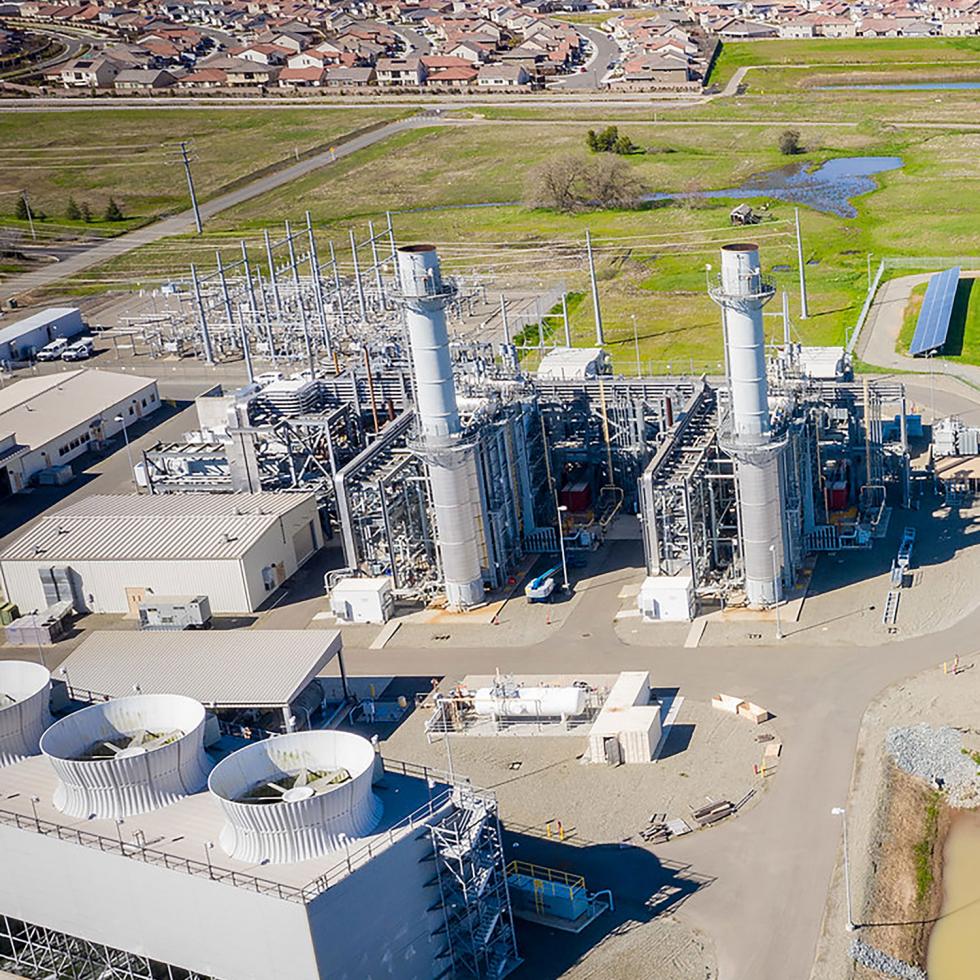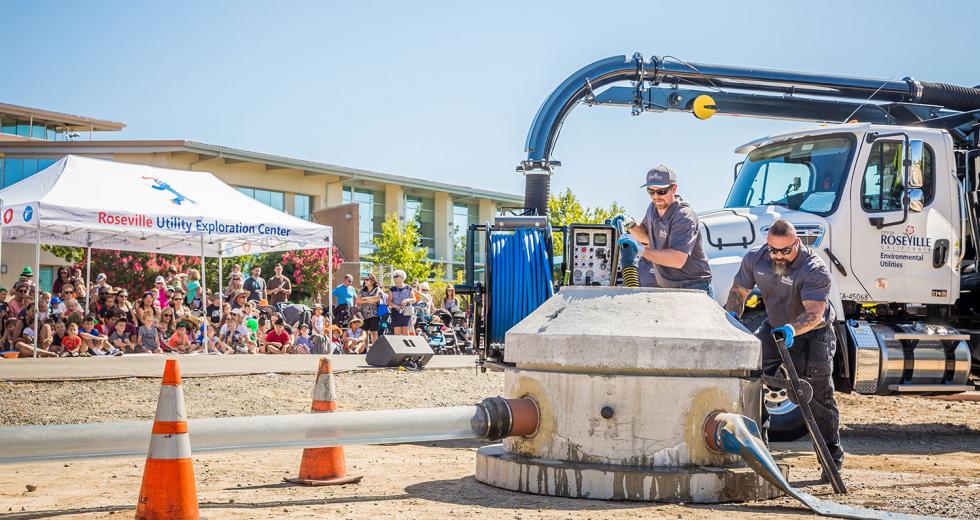During last year’s PG&E public safety power shut-offs throughout California, nearly 800,000 customers across Northern California were left without electricity, in some cases for several days. But the residents and businesses of Roseville were unaffected. That’s because these customers get their electricity from the City of Roseville-owned Roseville Electric Utility, which operates on a different grid than PG&E.
Roseville Electric provides some of the most reliable power in the state. The municipal ownership of the system also allows the utility provider to offer electricity at a lower cost than many other power providers in Northern California. Local control has also meant that the city can integrate its electric utility with its city-owned water, wastewater and solid-waste services to better serve residents and businesses, and be more efficient with its use of natural resources.
Other Placer County cities, including Lincoln and Rocklin, are also proactive when it comes to providing energy at lower rates for its residents. They do so by participating in a community choice aggregator, Pioneer Community Energy. This approach provides lower energy rates and reliability to these Placer Valley cities’ commercial and residential customers, as well as environmental advantages, adding value to those who work or live in the region.
Roseville Electric gets about 40 percent of its electricity from a city-owned natural gas power plant in Roseville. It accesses other sources of energy as a member of the Northern California Power Agency, a collective that enables utilities to jointly invest in energy sources. “That gives us access to geothermal power (from Lake County) and hydropower from Shasta Lake and the Central Valley (Project),” says Todd White, assistant director of Roseville Electric. “We also buy solar and wind power on the open market.”
As a result, about 50 percent of Roseville Electric’s generation is carbon-free, exceeding the state renewable-energy portfolio mandate of 33 percent. “We are seeing that more and more of our customers are looking for environmental stewardship and energy efficiency,” White says.
The utility recently unveiled a small solar project with capacity for 200 residential customers, according to Erin Frye, communications and marketing manager for the city.
“It’s only 1 (megawatt) of power, but we wanted to see what a demonstration would look like before we did this on a larger scale,” White says. “We filled up the program in about a month, and we have a waiting list. It wasn’t a hard sell.”
Frye says 85 percent of those customers chose to get 100 percent of their power from the solar project, even if it would cost slightly more than the base 50 percent that was offered.
White says Roseville Electric’s rates are about one-third lower than PG&E but only in part because of the municipality’s tax-exempt status. “The overall financial model is different for investor-owned utilities,” he says.
Investor-owned utilities generate revenue through fees for long-distance transmission of electricity and the financial return on investing in that distribution system. These companies are not tax-exempt and are responsible for paying dividends to investors. In contrast, municipal utilities like Roseville Electric are owned by local taxpayers, making
them tax-exempt and without the financial responsibility of dividends, so rates are closer to the actual cost of generating power.
White says lower rates attract business, especially energy-intensive companies, like the computer chip manufacturer, data centers and medical-device makers that chose to be based in Roseville. “(But) the main driver of our business growth is our reliability. Business tends to gravitate to areas where they know the power will stay on,” he says.
Roseville Electric Utility is municipally owned and gets about 40
percent of its electricity from a city-owned natural gas power
plant in Roseville. (Photo by Elijah Wilbur, courtesy of the City
of Roseville)

An American Public Power Association survey ranked Roseville Electric in the top 10-15 percent nationwide for reliability, saying its customers experience an outage about once every eight years, a benefit of having 85 percent of its distribution lines underground. As the city added 100,000 residents over the last 30 years, electrical lines and other infrastructure were placed in the earth for new developments and paid for by development fees.
Another benefit of a city-owned utility is it can pay for projects like the Roseville Utility Exploration Center. About 40,000 people yearly visit the 3,000-square-foot-plus education center, which hosts interactive workshops on environmental and recycling topics for all ages. “There was a conscious effort by the utilities to start this education early, because these lessons are good for the community,” says Rachel Tooker, Roseville Utility Exploration Center’s supervisor.
With Pioneer Community Energy, a community choice aggregation, a board of elected officials procures lower and stable prices for customers in Auburn, Colfax, Lincoln, Loomis and Rocklin. CCAs like Pioneer were created in the aftermath of California’s deregulation of investor-owned utilities in the early 2000s, intended to enable local control of prices for power and advance the use of renewable fuels.
Pioneer is part of a larger cooperative that includes the Bay Area Rapid Transit and several cities in Northern California to boost its buying power. The power it purchases is distributed to customers by PG&E, which also is responsible for billing customers. Although Pioneer’s customers lose power in a fire safety shut-off, they benefit from the savings created by Pioneer’s electricity purchases, which currently make up about one-third of its electrical power, according to Jenine Windeshausen, Pioneer’s executive director. “We posted our most recent rates in November (2019), and they are about 11 percent lower than PG&E’s,” she says.
Windeshausen says Pioneer is also working with PG&E to improve electrical distribution and reduce disruptions from shut-offs. “We are working with PG&E to identify circuits that are vulnerable to power outages and encouraging them to beef those up,” she says. Longer term, Pioneer is also studying how to create microgrids in areas near hospitals and other vital services to improve electric reliability.
Although the CCA can buy power from many sources, Windeshausen says Pioneer’s priority is to buy as much as possible locally, including from a bio-solids facility near Rocklin, the Western Placer Waste Management Authority and local commercial-sized solar farms. “We very much like local control in buying power that also has economic benefits for the area and supports local jobs,” she says.
Recommended For You
Sponsored

Turning Trash Into Energy
Providing high-quality city services to residents and businesses in Placer Valley goes beyond electricity. Roseville is also focused on environmental stewardship and is working to simplify recycling and conserve water, and it has plans to turn trash into energy to fuel the city’s power plant and garbage trucks.



